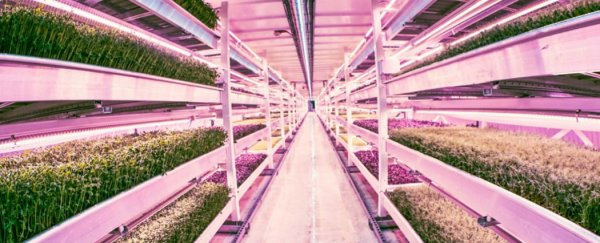The world's first underground urban farm has started trading in London, making use of old World War II tunnels underneath the city to host an eco-friendly, sustainable farming business.
'Growing Underground' (love the name!) uses hydroponics systems and LED lighting to produce a range of vegetables and herbs including celery, rocket, parsley, radish, and mustard leaf. A pesticide-free farming process - the results of 18 months of research and preparation - has been designed to produce crops with the least amount of energy expenditure possible.
The operators claim the hydroponics and looped irrigation system they use requires 70 percent less water than open-field farming and can produce crops all year round, but perhaps Growing Underground's greatest asset when it comes to low-impact farming will be its location.
Buried underneath urban London in Clapham in the city's south-west, the project's backers claim they'll be able to deliver produce "from farm to fork in under four hours", and all without the usual environmental impact of truck-based food transportation across England's motorways. The farm will first supply local restaurants through market distribution, but will later sell directly to the public.
The farm makes use of WWII-era bomb shelters located 12 storeys underground that were originally designed to provide shelter for 8,000 Londoners during air raids. The depth of the facility now provides some much-needed insulation to help grow crops 52 weeks of the year, with the temperature constant at 16 degrees Celsius throughout the seasons.
Not only is this an excellent example of how to breathe new life into an empty, pre-existing space, but it also provides the latest glimpse of how farming is moving into the 21st Century thanks to some pioneering high-tech agriculture ideas.
Already this year we've seen advancements like Japan's largest indoor farm, which claims to be up to 100 times more productive than outdoor fields. And a new development set to open in New Jersey later this year is transforming an old steel factory into the world's largest vertical farm. When it's up and running, this facility is expected to produce up to 1 million kilograms of pesticide-free produce annually.
With food supply management and security looking to be an increasing concern this century due to all sorts of environmental and economic factors, it's heartening to see food innovation like Growing Underground take off. Or should that be take root?
